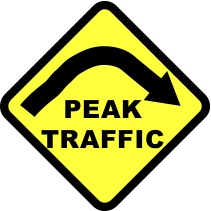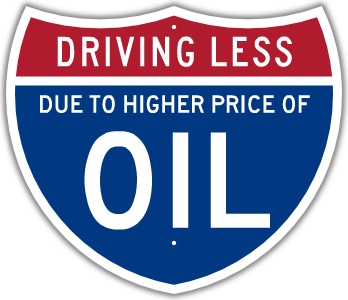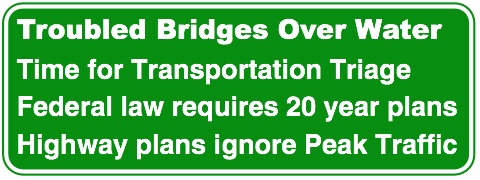NAFTA Superhighways
I-69, I-35 and the rest of the network of highway expansions between Canada and Mexico
| Trillion Dollar Highway Plans = Multiple Bypass Surgery a state by state list |
|
| High Priority Corridors specified by Congress in 1991, 1995, 1998, 2005, 2012 |
|
| NAFTA Superhighways | |
| Corridors of the Future | |
| J. Edgar Hoover Parkway: transportation surveillance, mileage taxes, RFID & video tolling |
|
| Paving Appalachia:
Corridor A to X in AL, GA, MD, MS, NC, NY, OH, PA, SC, TN, VA, WV |
|
| Alabama | Nebraska |
| Alaska | Nevada |
| Arizona | New Hampshire |
| Arkansas | New Jersey |
| California | New Mexico |
| Colorado | New York |
| Connecticut | North Carolina |
| Delaware | North Dakota |
| Florida | Ohio |
| Georgia | Oklahoma |
| Hawai'i | Oregon |
| Idaho | Pennsylvania |
| Illinois | Rhode Island |
| Indiana | South Carolina |
| Iowa | South Dakota |
| Kansas | Tennessee |
| Kentucky | Texas |
| Louisiana | Utah |
| Maine | Vermont |
| Maryland | Virginia |
| Massachusetts | Washington |
| Michigan | Washington, D.C. |
| Minnesota | West Virginia |
| Mississippi | Wisconsin |
| Missouri | Wyoming |
| Montana | |
The NAFTA Superhighway project is a series of north-south interstate highways across the U.S. These new and expanded roads would stretch from Canada through the U.S. to Mexico (excepting certain East Coast routes that would merely connect to ports on the Atlantic or Gulf coasts). The initial proposal for NAFTA Superhighways was in the 1991 "ISTEA" Federal transportation law, but has now expanded in scope to encompass several "superhighways on steroids." Some of these oversized roads would have car lanes, truck only lanes, parallel freight train rails, passenger train rails and utility corridors (electricity, oil, natural gas, water, etc). 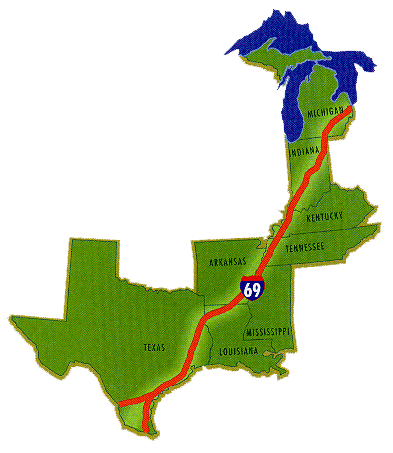
The planning for NAFTA Superhighways is predicated on continued cheap and abundant gasoline -- an assumption about to receive sobering reality from the underlying geological limits of petroleum production.
NAFTA Superhighways are essentially a key component of further "globalization" of commodity production intended to homogenize local communities and further centralize control over manufacturing. West Coast port terminals are clogged with the flood of cheap crap entering the US from China, and there are limited access routes between those ports and the rest of the country. If you buy something from China in a Wal-Mart in Indiana or Tennessee, it likely first had to pass through Long Beach, Oakland, Portland or Seattle area ports. Upgrading highway and rail connections to Mexican Pacific coast ports would allow these importers to expand, further increasing US dependence on Asian sweatshops. It will be interesting to see if there is a price point for oil that forces some relocalization of production back into the US -- how high does oil have to cost for it to be cheaper to pay higher wages in the US than to exploit low wage workers in China or other offshore locations? Of course, more freight routes to Mexico may facilitate increased movement of US factories south of the border, which is closer for distribution networks than Asia.
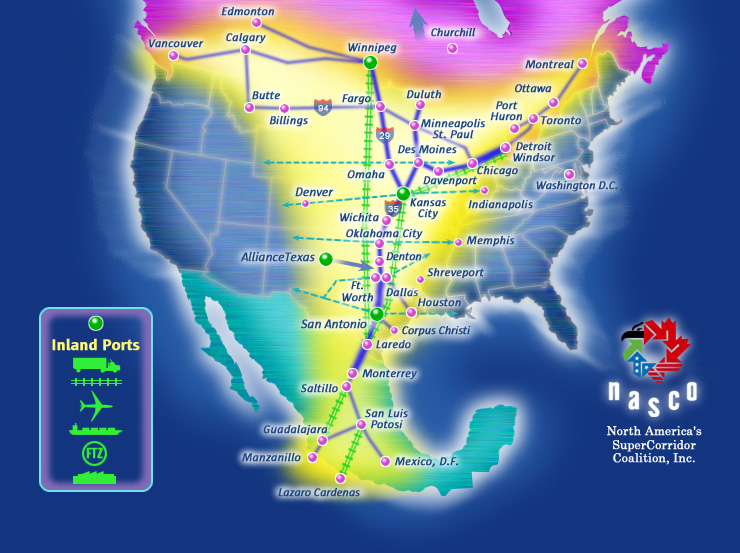 The NAFTA Superhighway is not ONE highway plan, it is a network of new highways and expanded (existing) highways, a series of north-south interstate highways across the U.S. These new and expanded roads would stretch from Canada through the U.S. to Mexico (excepting certain East Coast routes that would merely connect to ports on the Atlantic or Gulf coasts).
The NAFTA Superhighway is not ONE highway plan, it is a network of new highways and expanded (existing) highways, a series of north-south interstate highways across the U.S. These new and expanded roads would stretch from Canada through the U.S. to Mexico (excepting certain East Coast routes that would merely connect to ports on the Atlantic or Gulf coasts).
The initial proposal for NAFTA Superhighways was in the 1991 Intermodal Surface Transportation Efficiency Act (ISTEA) Federal transportation law, but has now expanded in scope to encompass several "superhighways on steroids." Some of these oversized roads would have many car lanes, truck only lanes, parallel freight train lines, passenger train lines and utility corridors (electricity, oil, natural gas, water, etc).
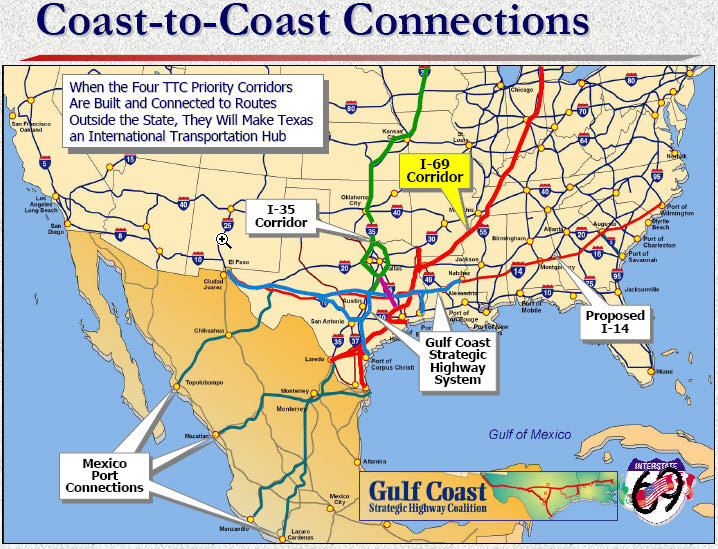 The 1991 ISTEA (Intermodal Surface Transportation Efficiency Act) specified the first iteration of the "NAFTA Superhighway." This was to extend I-69 from Indianapolis (it's current southern terminus) all the way to Mexico. Highwaymen from several states who each wanted their local and regional boondoggles got together and petitioned Congress to create this full route as a national priority "corridor." The new I-69 is planned to go through southern Indiana, Kentucky, Tennessee, Mississippi, Arkansas, Louisiana and Texas. The southern Indiana section is probably closest to being built.
The 1991 ISTEA (Intermodal Surface Transportation Efficiency Act) specified the first iteration of the "NAFTA Superhighway." This was to extend I-69 from Indianapolis (it's current southern terminus) all the way to Mexico. Highwaymen from several states who each wanted their local and regional boondoggles got together and petitioned Congress to create this full route as a national priority "corridor." The new I-69 is planned to go through southern Indiana, Kentucky, Tennessee, Mississippi, Arkansas, Louisiana and Texas. The southern Indiana section is probably closest to being built.
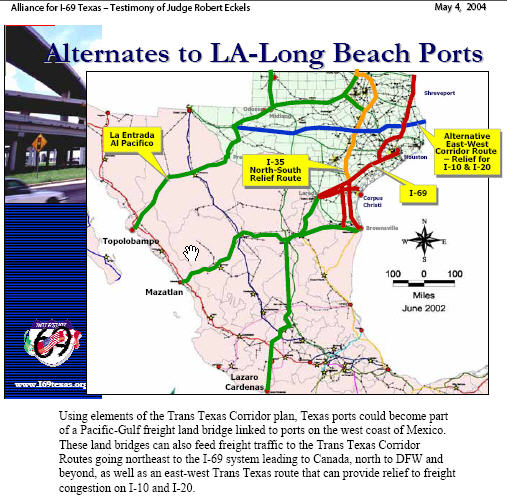 The 1998 "TEA-21" and 2005 "SAFETEA-LU" laws expanded from the few dozen new "corridors" in the 1991 ISTEA law and the 2005 law has a total of 80 corridors. Some of these corridors involve upgrading existing highways, some involve construction on "new alignment," a couple of the corridor designations specify numerous road projects in a region.
The 1998 "TEA-21" and 2005 "SAFETEA-LU" laws expanded from the few dozen new "corridors" in the 1991 ISTEA law and the 2005 law has a total of 80 corridors. Some of these corridors involve upgrading existing highways, some involve construction on "new alignment," a couple of the corridor designations specify numerous road projects in a region.
The planning for NAFTA Superhighways is predicated on continued cheap and abundant gasoline -- an assumption about to receive sobering reality from the underlying geological limits of petroleum production. NAFTA Superhighways are essentially a key component of further "globalization" of commodity production intended to homogenize local communities and further centralize control over manufacturing.
The national environmental groups who claim to be concerned about global warming, energy efficiency and public transportation did not focus on these NAFTA superhighway laws. Some of these groups even supported their passage since a minority of the bill included public transit funding and a few pennies (relatively speaking) for bicycle and pedestrian projects.
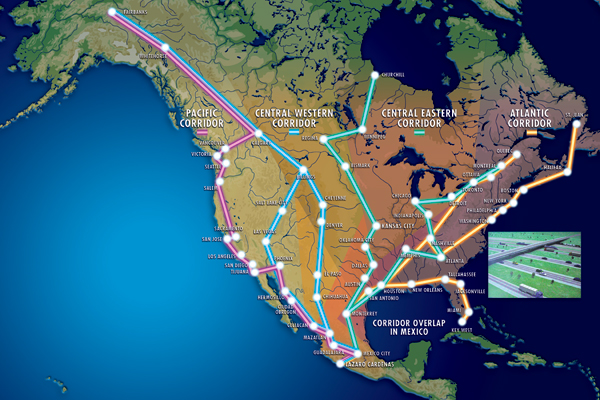
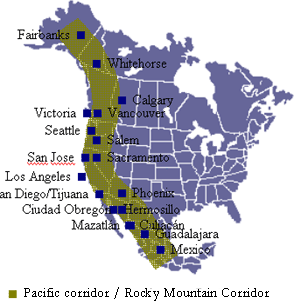


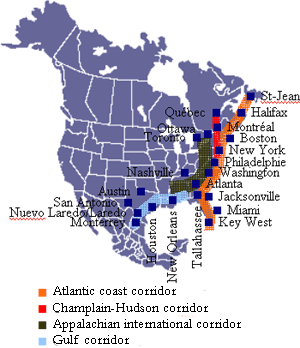
The FHWA "Corridors of the Future" program is a corollary to the NAFTA Superhighway proposals. Some of the "corridors of the future" would include major expansions of east-west highways (especially near Chicago) that would interconnect the north south new / expanded superhighways.
The new I-69 NAFTA Superhighway is one of the selected "corridors" for national prioritization.
Upgrading I-5 between Canada and Mexico is also a "corridor of the future," although they don't like to use the term NAFTA Superhighway. In Washington State, a parallel effort has studied creating a "Washington Commerce Corridor" between Vancouver WA and Vancouver BC with car lanes, truck lanes, freight and passenger rail, and utilities (electric lines, water, oil, gas, etc). This is the same model as the Trans Texas Corridor proposals (a large network of new highways around Texas with separate facilities for cars, trucks, freight trains, passenger rail and utilities).
The biggest part of the NAFTA Superhighway is the Trans Texas Corridor project, a series of planned super highways without parallel (yes, they are bigger in Texas). It would include freeways for cars, truck only lanes, freight and passenger rail lines, and utilities - power lines, water pipes, oil and gas pipelines. It is a prototype of several other "corridors" around the country, including the Washington Commerce Corridor planned between Vancouver, WA and Vancouver, B.C.
Under pressure, Governor Rick Perry of Texas has announced these projects are not going to be built as originally planned. Cancellation of an option in a study does not guarantee cancellation of the project. A narrower version of a NAFTA Superhighway would still have most of the same community, environmental and financial impacts.
Trans Texas Corridor cross section
the model for the "NAFTA Superhighways"
The TTC officially has been withdrawn as a particular concept, but TTC shows what the State of Texas has been considering for new highway designs. The primary routes - I-69 and upgraded or bypassed I-35 - are still being pushed. A slightly downsized superhighway with a narrower "wrong of way" would have roughly the same ecological, community and financial impacts even if it is called something other than TTC.
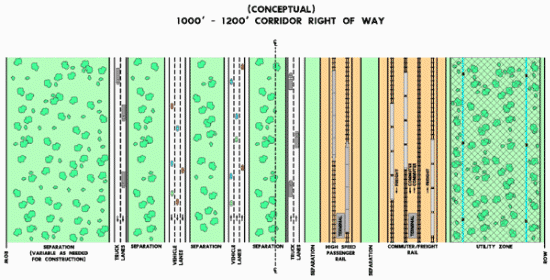
truck lanes - vehicle lanes - high speed passenger rail - commuter / freight rail - utility zone
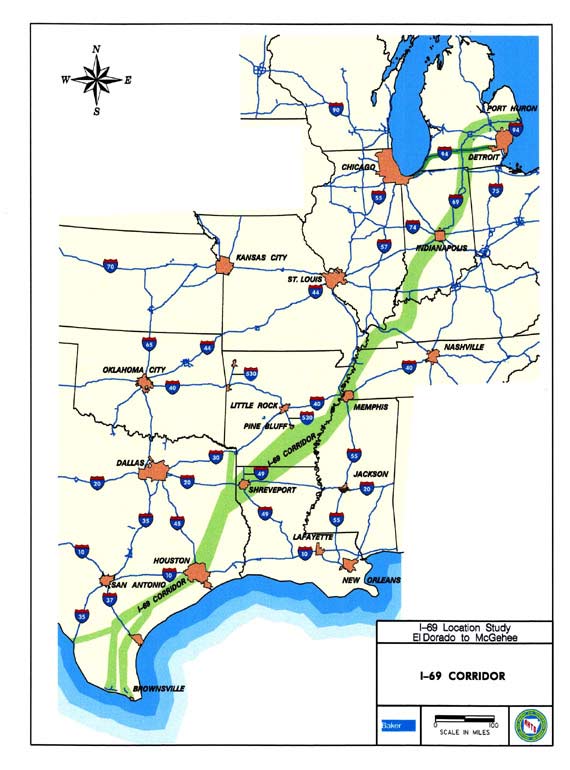
www.truthbetolled.com
movie about the planned Trans Texas Corridor superhighways (in opposition)
http://dfazack.typepad.com/truth_be_tolled/
blog for "Truth Be Tolled"
http://corridornews.blogspot.com
The Trans-Texas Corridors, eminent domain abuse, and the Texas Toll Road Rebellion
http://transtexascorridor.blogspot.com
www.keeptexasmoving.com (pro-TTC)
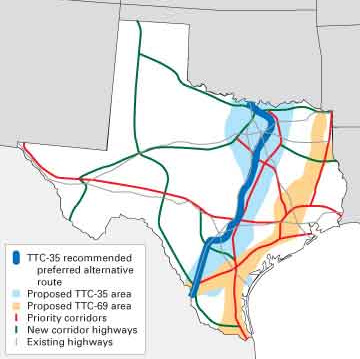
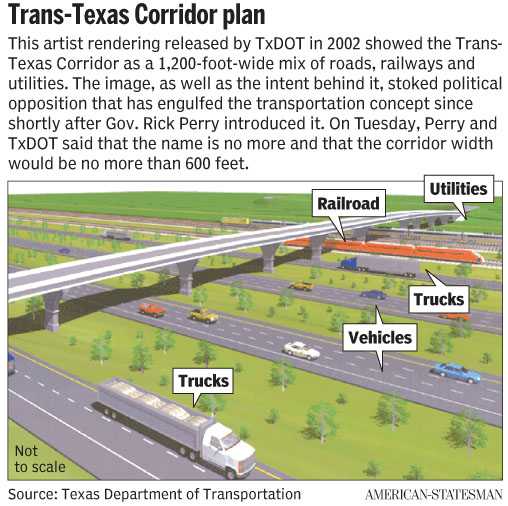
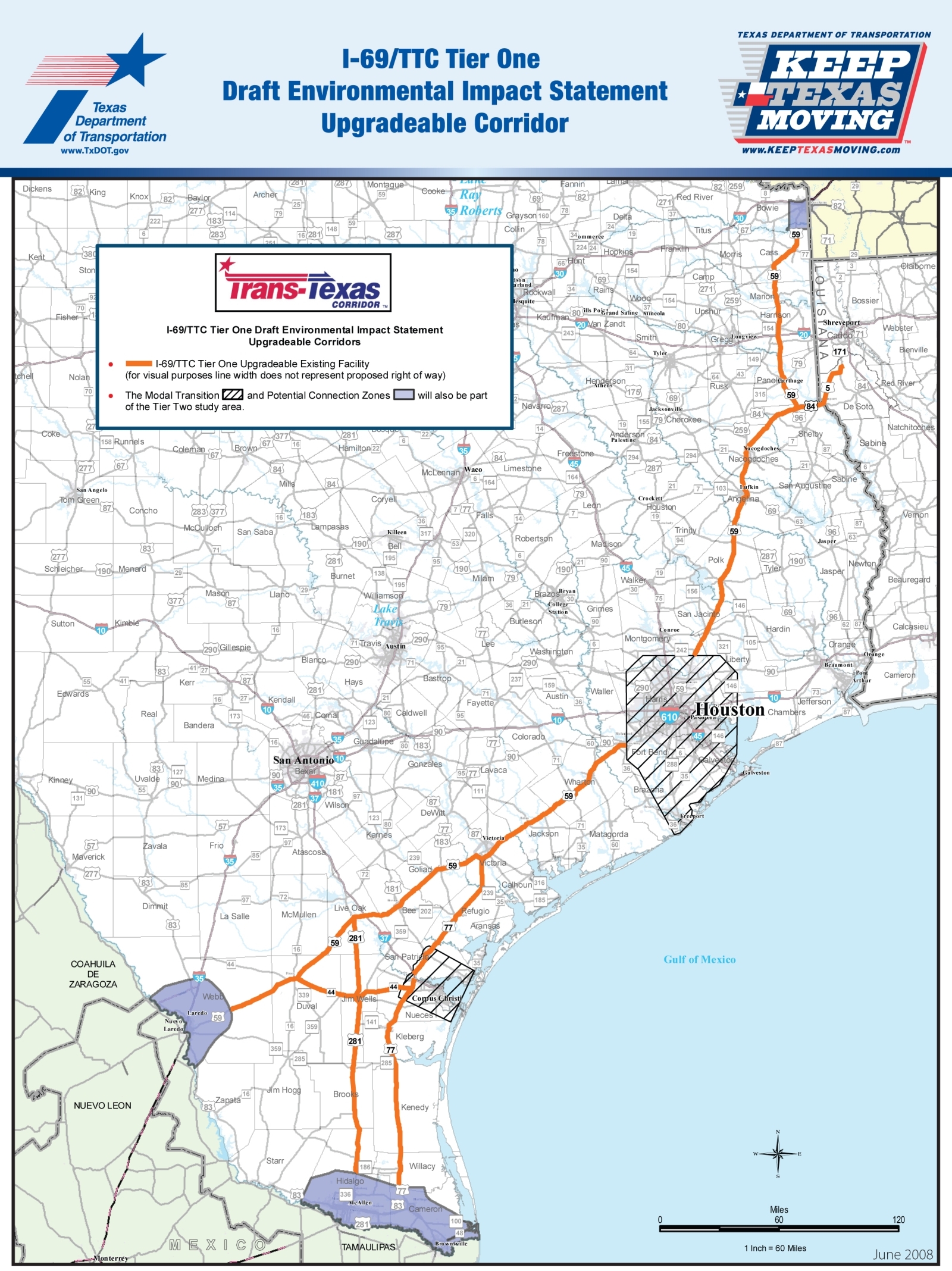
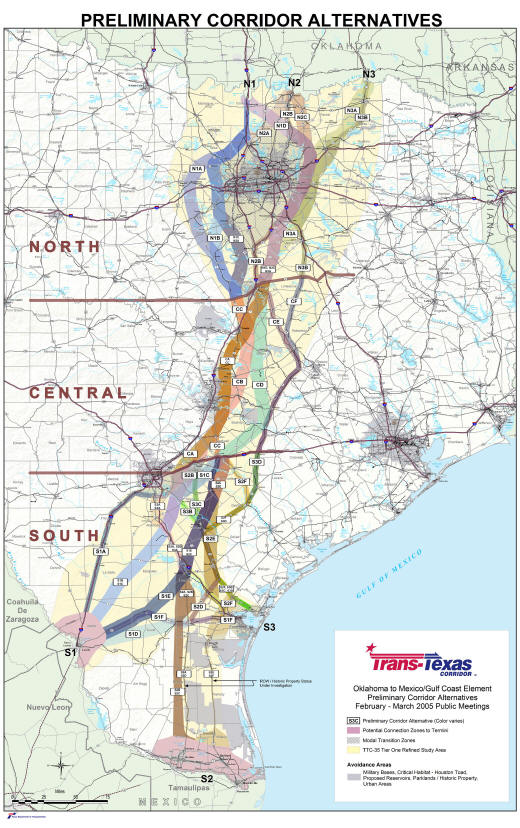
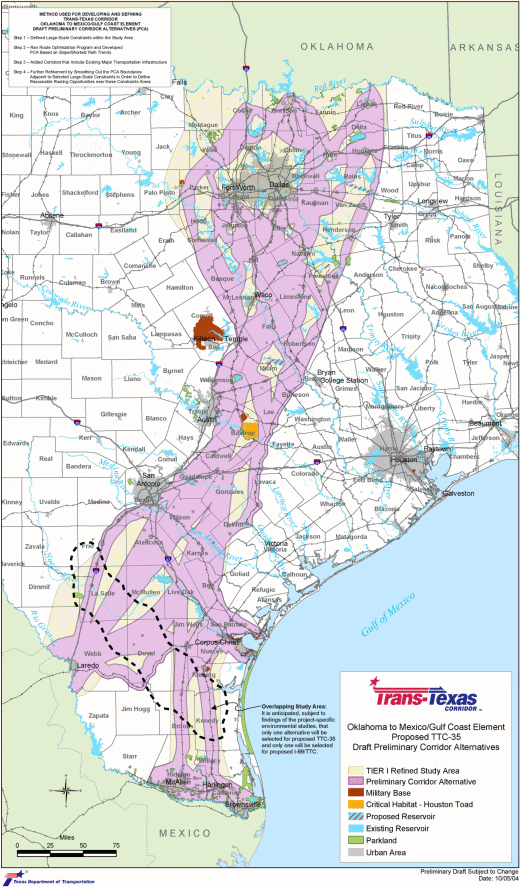

www.aaroads.com/high-priority/corr18.html
excerpt:
the concept of Interstate 69 as a "NAFTA Highway" was conceived by Indiana officials who really wanted the Interstate 69 southwestern extension. To get federal funding, they planned a multi-state routing that would cut through Kentucky, Tennessee, Mississippi, Arkansas, Louisiana, and Texas on its way to Mexico. By marketing the whole "NAFTA Corridor" concept, officials and businessmen in Indiana were able to get federal money behind the project. Of course, money was also secured for the Indiana section.
www.peakoilblues.com/blog/?p=77
Get Your Kicks on Route 6-6-6
I think of a world where fuel is so expensive, and products are so costly to move, that one needs a permit to enter that NAFTA Transnational Superhighway. I imagine that without paying someone off, it will be impossible to get that permit. Wal-Mart gets one. Dole will be cruising it too. Of course Proctor and Gamble, and you can name a few dozen others. And they’ll be fast freight trains and bullet trains that will carry ‘approved’ citizens from one place to another. There’ll be fiber optic cable lines running along side to keep our communications open. Once on the highway, the limousines and huge container carriers and trains can fill-up the tank without limits, because, after all, you have a permit to be on there anyway. Along side this Superhighway, are the gas and oil pipelines, and of course, THAT’s why you need the permit to enter, or at least that’s the excuse. Gas flows down from Canada, for as long as it lasts, and oil flows up, until the last trickle. It is paid for by Ameros, a proposed currency I never even heard of until a few days ago. Euros, Ameros, Get it?
www.dailykos.com/story/2006/6/15/1211/82655
Secret NAFTA Superhighway: Is the Right Swiftboating W?
by John Campanelli
Wed Jun 14, 2006 at 10:21:01 PM PST
two comments from readers of that web page:
This has nothing to do with Bush (2+ / 0-)
it is all about the congressional election in the fall. The Repub congress
critters will all say "look at what the Dems voted for--they're letting
brown people into the country."
This is all about stoking fears on the ignorant far right, and using this
fear to get people to turn against Dems.
On the immigration issue, the Dems are voting with the president right?
This isn't an accident. Bush is history, we shouldn't be focusing on him.
The immigration issue was chosen for this election year for a very good
reason.
You cannot depend upon American institutions to function without pressure.
--MLK Jr.
by Opakapaka on Wed Jun 14, 2006 at 10:50:50 PM PST
It's actually quite Rovian (1+ / 0-)
You would have to be a political Linda Blair, your head spinning around
in all directions, in order to catch the number of head fakes going on
here.
It throws Bush to the dogs by way of other conservatives so it somehow
has
110th U.S. Congress (2007-2008)
H. Con. Res. 40: Expressing the sense of Congress that the United States
should not engage in the construction of...
HCON 40 IH
110th CONGRESS
1st Session
H. CON. RES. 40
Expressing the sense of Congress that the United States should not engage
in the construction of a North American Free Trade Agreement (NAFTA) Superhighway
System or enter into a North American Union with Mexico and Canada.
IN THE HOUSE OF REPRESENTATIVES
January 22, 2007
Mr. GOODE (for himself, Mr. WAMP, Mr. JONES of North Carolina, Mr. PAUL, Mr. STEARNS, Mr. DUNCAN, and Ms. FOXX) submitted the following concurrent resolution; which was referred to the Committee on Transportation and Infrastructure, and in addition to the Committee on Foreign Affairs, for a period to be subsequently determined by the Speaker, in each case for consideration of such provisions as fall within the jurisdiction of the committee concerned
CONCURRENT RESOLUTION
Expressing the sense of Congress that the United States should not engage
in the construction of a North American Free Trade Agreement (NAFTA) Superhighway
System or enter into a North American Union with Mexico and Canada.
Whereas the United States Departments of State, Commerce, and Homeland
Security participated in the formation of the Security and Prosperity
Partnership (SPP) on March 23, 2005, representing a tri-lateral agreement
between the United States, Canada, and Mexico designed, among other things,
to facilitate common regulatory schemes between these countries;
Whereas reports issued by the SPP indicate that it has implemented regulatory
changes among the three countries that circumvent United States trade,
transportation, homeland security, and border security functions and that
the SPP will continue to do so in the future;
Whereas the actions taken by the SPP to coordinate border security by
eliminating obstacles to migration between Mexico and the United States
actually makes the United States-Mexico border less secure because Mexico
is the primary source country of illegal immigrants into the United States;
Whereas according to the Department of Commerce, United States trade deficits
with Mexico and Canada have significantly increased since the implementation
of the North American Free Trade Agreement (NAFTA);
Whereas the economic and physical security of the United States is impaired
by the potential loss of control of its borders attendant to the full
operation of NAFTA and the SPP;
Whereas the regulatory and border security changes implemented and proposed
by the SPP violate and threaten United States sovereignty;
Whereas a NAFTA Superhighway System from the west coast of Mexico through
the United States and into Canada has been suggested as part of a North
American Union to facilitate trade between the SPP countries;
Whereas the State of Texas has already begun planning of the Trans-Texas
Corridor, a major multi-modal transportation project beginning at the
United States-Mexico border, which would serve as an initial section of
a NAFTA Superhighway System;
Whereas it could be particularly difficult for Americans to collect insurance
from Mexican companies which employ Mexican drivers involved in accidents
in the United States, which would likely increase the insurance rates
for American drivers;
Whereas future unrestricted foreign trucking into the United States can
pose a safety hazard due to inadequate maintenance and inspection, and
can act collaterally as a conduit for the entry into the United States
of illegal drugs, illegal human smuggling, and terrorist activities; and
Whereas a NAFTA Superhighway System would likely include funds from foreign
consortiums and be controlled by foreign management, which threatens the
sovereignty of the United States: Now, therefore, be it
Resolved by the House of Representatives (the Senate concurring), That--
(1) the United States should not engage in the construction of a North American Free Trade Agreement (NAFTA) Superhighway System;
(2) the United States should not allow the Security and Prosperity Partnership (SPP) to implement further regulations that would create a North American Union with Mexico and Canada; and
(3) the President of the United States should indicate strong opposition to these acts or any other proposals that threaten the sovereignty of the United States.
www.culturechange.org/I-69May2004.html
NAFTA SUPERHIGHWAY TOUR 1997
NAFTA SUPERHIGHWAY UPDATE 1997
and other Auto-Free Times articles
See Alliance for a Paving Moratorium webpage
Sustainable Energy Institute attended two NAFTA watchdog conferences in Texas, 1999 and 2000, regarding environmental implementation of NAFTA. Our anti-road concerns were ignored despite the sincerity and passion of our representatives
http://gristmill.grist.org/story/2006/7/10/10921/0135
The NAFTA super highway: Not the nationwide high-speed rail system one
might have liked
Posted by David Roberts at 10:09 AM on 10 Jul 2006
Jerome Corsi is a loathsome toad, responsible for the Swift Boat smears and a number of other far-right hack jobs, but I nonetheless share his concern about this:
Quietly but systematically, the Bush Administration is advancing the plan to build a huge NAFTA Super Highway, four football-fields-wide, through the heart of the U.S. along Interstate 35, from the Mexican border at Laredo, Tex., to the Canadian border north of Duluth, Minn.
Among other charming features, the highway is deliberately intended to bypass any involvement from unions, either the Longshoreman's Union or the Teamsters Union. The U.S. DOT has earmarked $2.5 million to an NGO called the North America SuperCorridor Coalition Inc. to create "a 10-lane limited-access road (five lanes in each direction) plus passenger and freight rail lines running alongside pipelines laid for oil and natural gas."
Pro-NAFTA Superhighway resources
www.ambassadorbridge.com/nafta_case.html
Ambassador Bridge - the NAFTA Superhighway Coalition (Canadian group)
North America SuperCorridor Coalition Inc.
www.fina-nafi.org/eng/integ/corridors.asp?langue=eng&menu=integ
The north americain trade corridors




